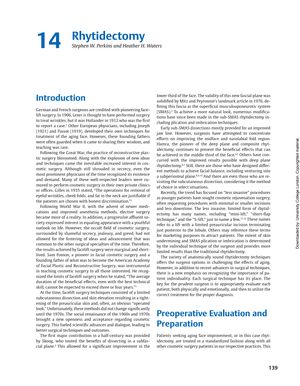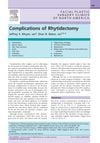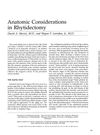Rhytidectomy: Evolution, Techniques, Considerations, and Complications
January 2016
in “
Georg Thieme Verlag eBooks
”

TLDR Facelift surgery has evolved to focus on natural results and safety, with patient selection and postoperative care being key to success.
The document from 2016 details the evolution, techniques, considerations, and complications of rhytidectomy, or facelift surgery. It describes the progression from simple skin tightening to more advanced methods involving the superficial musculoaponeurotic system (SMAS) for natural-looking results and the trend towards less invasive "mini-lifts." Patient evaluation is crucial, with ideal candidates having good skin tone, strong facial structures, and being non-smokers. The document outlines the importance of anatomical understanding, incision planning, and managing expectations for successful outcomes. Techniques include careful liposuction, platysmaplasty, and SMAS manipulation, with a focus on avoiding nerve damage and ensuring patient safety. Postoperative care is emphasized, including emotional support and managing complications like hematoma formation, flap necrosis, and nerve damage. The document highlights that minor complications are common, with most resolving over time, but underscores the importance of meticulous technique and thorough postoperative care to minimize risks and ensure patient satisfaction.




